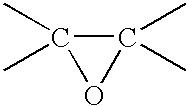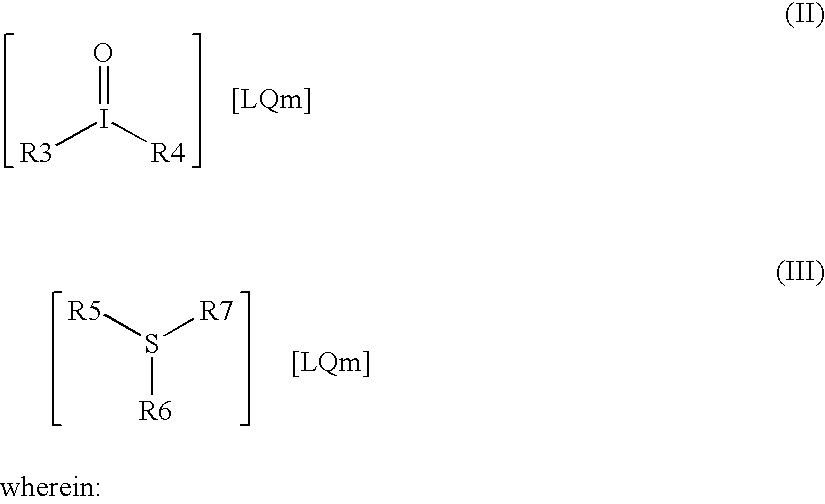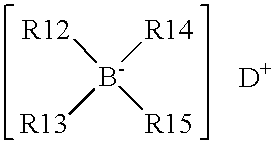Radiation curable resin composition for making colored three dimensional objects
a three-dimensional object and resin composition technology, applied in the field of three-dimensional object production methods, can solve the problems of producing desired three-dimensional objects, and achieve the effect of easy monitoring and correction, and low density difference between resin and three-dimensional objects
- Summary
- Abstract
- Description
- Claims
- Application Information
AI Technical Summary
Benefits of technology
Problems solved by technology
Method used
Image
Examples
example 7
[0114] The resin of example 6 and the commercial Somos 7720, having no latent coloring component C, have been cured under nitrogen with two doses of 0.13 J / cm.sup.2 radiation of a D lamp into a 20 mil (0.51 mm) thick film. Color measurement has been performed with a Macbeth Color Eye 7000 spectrophotometer. Results are shown in table 2.
2 TABLE 2 7720 film Example 6 resin film L 91.3 77 `a` -2 0 `b` 8 10
examples 8-10
[0115] A base resin containing 4.1 wt % 3,4-Epoxy Cyclohexyl Methyl-3,4-Epoxy Cyclohexyl Carboxylate (Uvacure 1500), 6.6 wt % 3-Ethyl-3-(hydroxymethyl)oxetane (UVR6000), 16.4 wt % Epon 825, 4 wt % Dipentaerithritol pentaacrylate (Sartomer SR-399), 63 wt % silica (Siltex 44), 1.3 wt % Triton X-100, 2.9 wt % Thixatrol XT, 0.23 wt % 1-Hydroxycyclohexyl phenyl ketone (Irgacure 184), and 1.3 wt % CPI-6976 (a mixture of Sulfonium(thiodi-4,1-phenylene)bis[diphenyl-bis[(OC-6-11)he-xafluoroantimonate(1-)]] and p-Thiophenoxyphenyidiphenylsulfonium) is mixed with different amounts of latent coloring component C (Copikem 20 Magenta). 6 mils films were prepared by applying a 6 mil film onto a petridish, irradiating it with an solid state laser, having a wavelength of 365 nm, with an exposure of 200 mJ / cm.sup.2. The film was cleared with tri(propylene glycol) methyl ether and rinsed with isopropylalcohol before postcure. Two thin films for each sample were postcured in a postcuring apparatus for ...
PUM
| Property | Measurement | Unit |
|---|---|---|
| thickness | aaaaa | aaaaa |
| wavelength range | aaaaa | aaaaa |
| weight percent | aaaaa | aaaaa |
Abstract
Description
Claims
Application Information
 Login to View More
Login to View More - R&D
- Intellectual Property
- Life Sciences
- Materials
- Tech Scout
- Unparalleled Data Quality
- Higher Quality Content
- 60% Fewer Hallucinations
Browse by: Latest US Patents, China's latest patents, Technical Efficacy Thesaurus, Application Domain, Technology Topic, Popular Technical Reports.
© 2025 PatSnap. All rights reserved.Legal|Privacy policy|Modern Slavery Act Transparency Statement|Sitemap|About US| Contact US: help@patsnap.com



